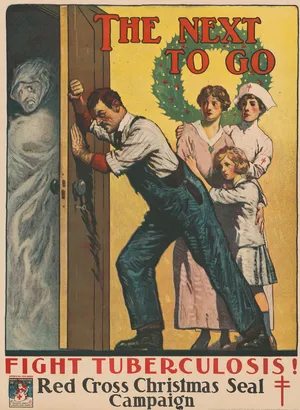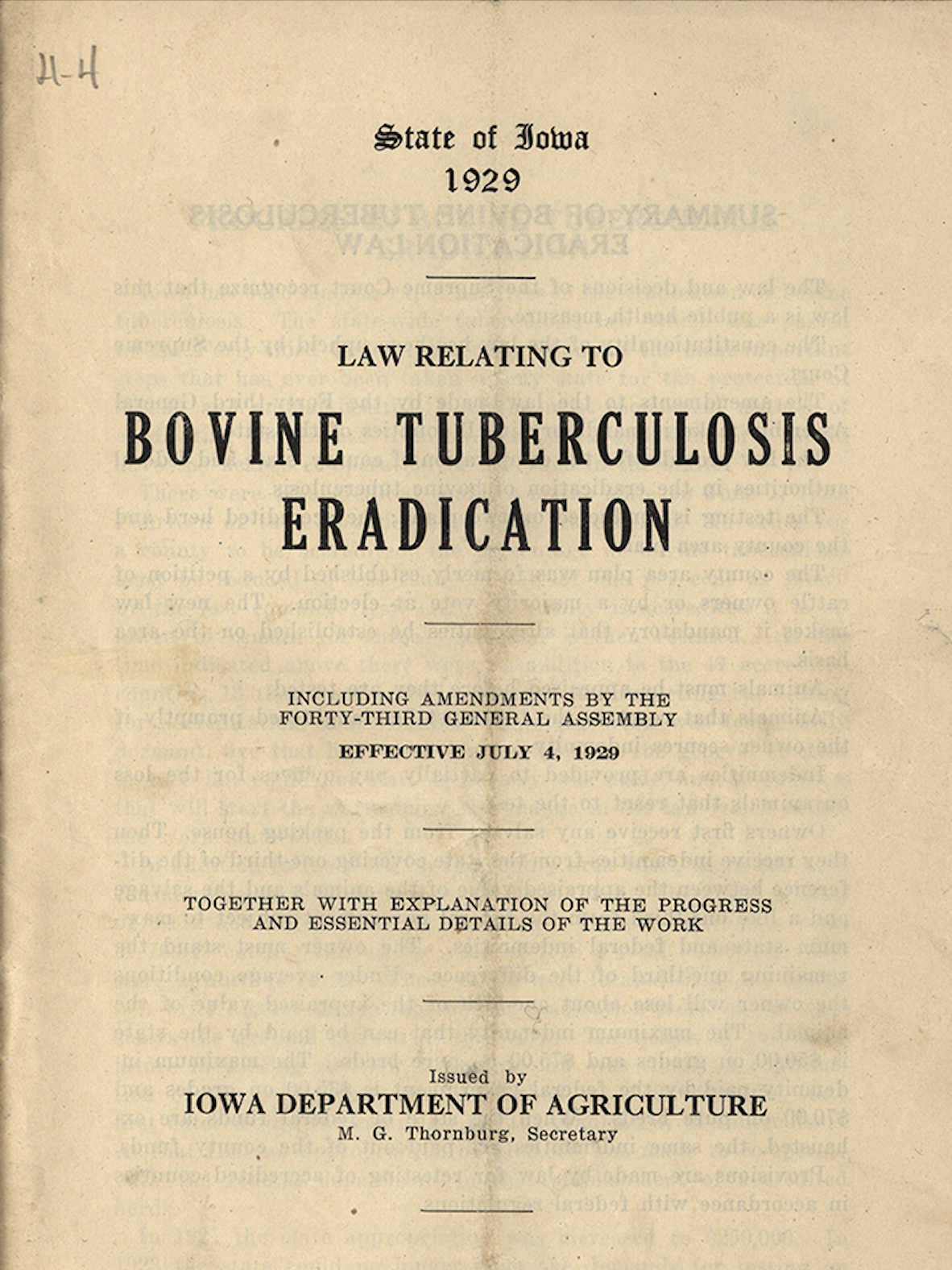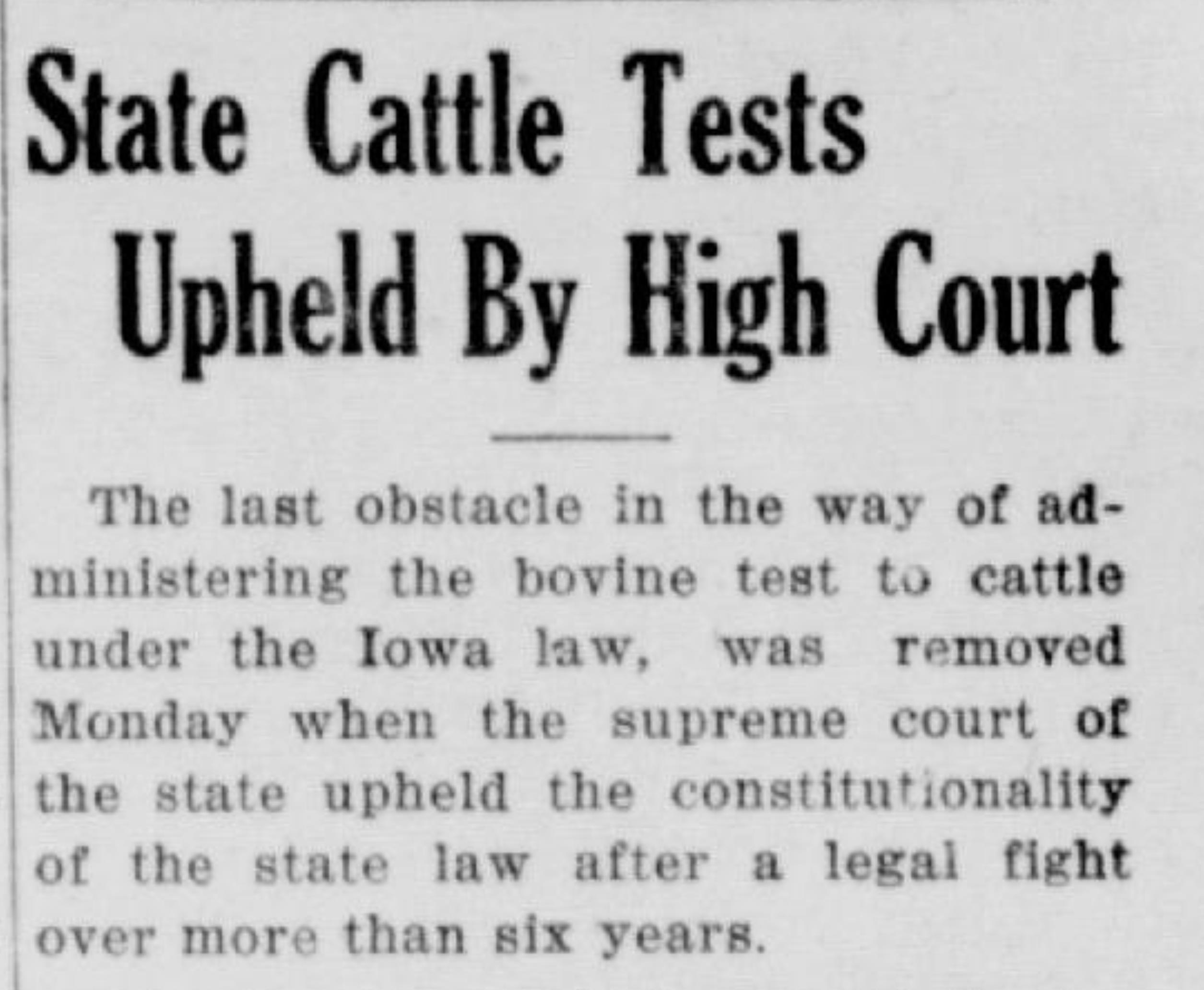Throughout the state, testing mostly went well. However, some farmers claimed it infringed upon their rights and took the case to court. The Iowa Supreme Court ruled against the farmers, and testing proceeded.
Tuberculosis
Bovine and Human Tuberculosis
Tuberculosis (TB) is a bacterial infection that affects vital organs, specifically the lungs, in humans and animals. In 1894, Iowa's State Veterinarian declared bovine (cattle) tuberculosis the state's top animal health issue. Because they believed it could spread to people through cow milk, Iowa veterinarians considered it their responsibility to identify and eliminate the disease.
“There is perhaps no single disease that has aroused more interest and that is of greater significance to the livestock industry of this country than bovine tuberculosis.”
-Veranus Moore, New York State Veterinarian. (National Library of Medicine, 1912)

(American Red Cross, 1919, Britannica)
Oath of Responsibility (Pat Hoffman, Veterinarian, Personal Interview, April 9, 2025)
Iowa's Testing Mandate
In 1929, veterinarians got help from the Iowa Legislature when it enacted a law that required tuberculosis testing for all cattle. State-approved vets were hired to travel and conduct tests in all ninety-nine Iowa counties. They used a needle to administer tuberculosis antigens and later checked for a reaction that indicated the presence of bovine tuberculosis. TB positive cattle were slaughtered, and the farmer received government compensation equal to two-thirds of each cow's market value. This economic loss worsened the financial situation for already struggling farmers throughout the state, which primed them to fight back.

(George J. Ormsby Papers, Iowa State University Archives, 1929)

(The Boyden Reporter, July 4, 1929)
"I believe in pasteurization, but I also strongly believe in the eradication of tuberculosis animals from dairy herds; this can be done by careful testing... This is the only safe way for children on the farms where pasturized milk cannot be had."
-Dr. Charles H. Mayo (Nashua Reporter, April 4, 1929)

(Tipton Advertiser, September 25, 1930)